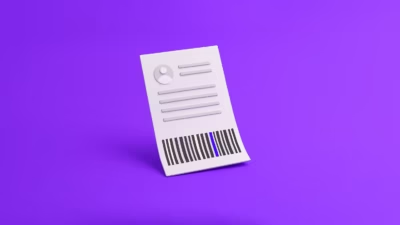There’s a special kind of panic that hits when someone says,
“Just tailor your resume to your experience!”
…and you realize your “experience” is basically: breathing, eating snacks, and maybe a college project where half your team ghosted you.
I’ve been there.
Fresh out of school, no internships, no fancy research papers, no uncle who “knew a guy” at Google.
Just me, my laptop, and a mild existential crisis.
But here’s the plot twist: that so-called “no experience” resume?
It landed me five interviews — real ones, at companies that didn’t even blink at my empty “professional experience” section.
Here’s how it happened — and how you can absolutely, 100%, shamelessly steal the strategy.
The Harsh Truth: “Experience” Isn’t What You Think
Let’s clear something up first.
When recruiters say they want “experience,” they’re not just asking if you had a 9-to-5 with a corporate email address.
They’re asking:
- Can you deliver value?
- Can you work on real problems?
- Can you learn fast without being a hand-holding liability?
You can prove all of those things without a formal job.
Experience is not just employment — it’s evidence of skill.
Once I understood that, the game changed.
Step One: Build Evidence Before You Build a Resume
Let’s rewind the clock a little.
I spent three ugly months after graduation tweaking my resume endlessly: changing fonts, rearranging sections, stressing about whether “Proficient in Excel” sounded impressive enough.
None of it mattered.
Because I had nothing real to show.
So I stopped tweaking and started building proof:
- I finished two Kaggle competitions (not top 10%, not even top 30%, but I finished).
- I published three mini-projects on GitHub: one data cleaning script, one machine learning model predicting Netflix ratings, one basic dashboard using Streamlit.
- I wrote a 600-word blog post explaining a project like I was teaching it to a friend.
In 4 weeks, I created a mini “experience portfolio” out of thin air.
And you bet your boots I treated it like it was as legit as a Google internship.
This wasn’t faking it. It was making visible the fact that I could do the work.
Step Two: Rebuild the Resume Like a Story, Not a Job Application
Once I had some fresh “evidence” in hand, I nuked my old resume from orbit and started fresh.
Here’s how I structured it:
1. Projects First, Loud and Proud
Instead of shoving projects into the corner after “Work Experience,” I made them the STAR of the show.
Section Title: Projects & Practical Experience
Then I wrote each project like it was a job:
Predicting Netflix Ratings | Personal Project
- Built a machine learning model (Random Forest, XGBoost) to predict Netflix movie ratings with 73% accuracy.
- Processed and cleaned 50,000+ movie metadata points using Python (Pandas, NumPy).
- Deployed a simple user interface using Streamlit to showcase live predictions.
Notice the verbs: Built. Processed. Deployed.
Not “learned about” or “experimented with.” Action words matter.
2. Skills Section: Ruthless and Realistic
No more 50 buzzwords just to look smart.
I split my Skills section into two honest parts:
- Technical Skills: Python, Pandas, Scikit-learn, SQL, Tableau
- Tools & Platforms: GitHub, Kaggle, Google Colab, Streamlit
If I hadn’t touched it for real, it didn’t make the list.
I’d rather a recruiter think, “Okay, solid basics,” than “Wow, this kid is lying through his teeth.”
3. Education: Short and Sweet
Unless you graduated from MIT and discovered a new planet during your undergrad, nobody’s here for your course list.
I kept mine to:
B.S. in Computer Science | [University Name]
Graduated: 2022 | GPA: 3.6/4.0
Boom. Done. No mention of “Relevant Coursework” unless it directly tied to the jobs I was applying for.
4. Optional Bonus: A Tiny “About Me” Section
This is controversial, but hear me out.
I added a 2-3 line personal summary at the top — not a cringy “Objective” statement, but a human, confident blurb:
“Aspiring data scientist with a passion for translating messy datasets into meaningful insights. Comfortable in Python, curious by nature, and committed to shipping real-world projects.”
Not necessary for every resume. But it set the tone:
“Hey, I may not have 5 years of experience, but I’m serious about this.”
Step Three: Apply Aggressively — But Smartly
Armed with my new resume, I sent 27 applications in 2 weeks.
Targeted ones. Not blind submissions.
How I picked companies:
- Small-to-medium companies who needed data help but couldn’t afford a “unicorn” candidate
- Startups posting for “Entry-Level Data Analyst” or “Junior Data Scientist” roles
- Companies where the job description said stuff like “Looking for a self-starter” or “Someone excited to learn and grow”
Translation: they knew they were hiring people still rough around the edges.
Step Four: The Interviews — and Why They Actually Wanted Me
Out of those 27 applications:
- 9 companies ghosted me completely (par for the course)
- 13 sent a polite rejection
- 5 invited me for interviews
Here’s the thing every interviewer commented on:
- “I like that you have live projects on GitHub.”
- “It’s clear you didn’t just learn theory — you built something.”
- “You explained your process really well in your resume.”
Not a single person said, “But you didn’t have an internship.”
Not one.
What mattered was evidence of hustle.
And a resume that told a coherent story: “I may be new, but I can already bring value.”
Lessons You Can Steal Right Now
1. Projects Beat Platitudes.
Nobody cares if you’re “a passionate self-starter” if you can’t show it.
2. Action Verbs Sell Better Than Titles.
Built, cleaned, deployed, automated > “participated in group project.”
3. A GitHub Link Is Worth a Thousand Words.
Even if it’s just 2-3 repos, show your work. Let them see your messy early commits. It humanizes you.
4. Make Recruiters’ Jobs Easier.
They don’t want to dig through 2 pages of clutter. Show your skills clearly and quickly.
5. Apply Before You Feel ‘Ready’.
Waiting to be “qualified enough” is a trap.
Confidence compounds after you start putting yourself out there.
TL;DR: Your ‘No Experience’ Resume Game Plan
- Build 2-3 real projects you can explain to a stranger.
- Write a clean, action-driven resume that leads with projects.
- Focus on real tools and skills you’ve touched — even lightly.
- Publish your work (GitHub, Kaggle, blogs) if possible.
- Apply to places that value growth mindset over perfect résumés.
Final Pep Talk: You Have More Than You Think
If you’re reading this thinking,
“Yeah but my projects aren’t good enough yet,”
I’ve got news for you:
Nobody’s early projects are “good enough.”
Not mine. Not the pros you look up to. Not even the ones you admire on LinkedIn.
The difference is:
Some people show their work anyway and improve in public.
Others hide until they feel “ready” and miss their window.
You have everything you need right now to create a resume that opens doors.
It’s not about faking it. It’s about showing your work before you feel ready — and daring to believe someone will notice.
(And they will.)





